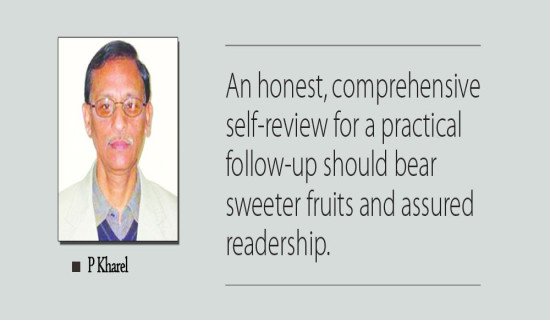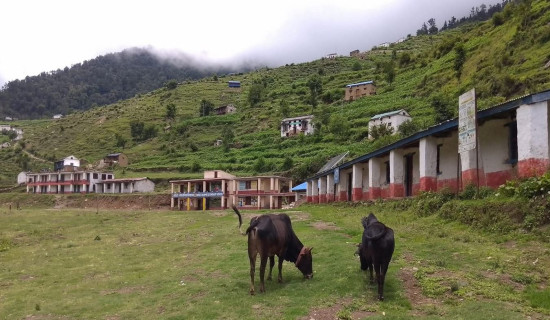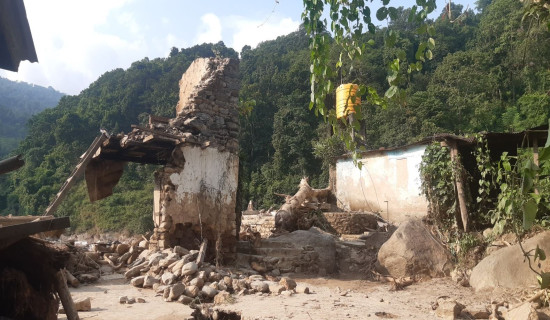- Monday, 15 December 2025
Dashain Vibes In Air
Dixya Poudel
As the most auspicious festival of Nepal, Dashain heralds a holiday season filled with traditional festivities. As a fifteen-day event, Dashain remains a festival that brings festive joy to Nepali people. It means a respite for students and professionals, an occasion to cook and indulge in cuisines, a time for get-togethers, and a moment to exchange greetings and well-wishes.
During the main day of Dashain called Bijaya Dashami, the elders put tika on the foreheads of their younger family members and relatives. It goes without saying that the elders are considered pillars of erudition in Nepali traditions and to receive tika, jamara, and blessings from them is taken as a great opportunity.
As such, one of the positive aspects of this festival is the regard for the elderly. In most traditional societies across the world, age is considered a wealth of wisdom, knowledge, advice, and guidance. And Nepal is one of them. Among the many traditions that Nepali people consider sacred, receiving blessings from elders is one of them.
There is further a custom of cooking delicious cuisines in Dashain during which a variety of authentic, local, and traditional dishes are prepared. Then there is a frenzy of shopping that takes place at this time. During Dashami, people are expected to wear their best, hence the shopping. It is especially the focus of this time of the year as there are shocking discounts and sales on shops. Adults probably recollect their childhood bliss when buying Dashain clothes in a festivity spree.
Likewise, people take to playing cards, kites and swings in Dashain. In cities however, there are fewer spaces for building a bamboo swing but it is commonplace in villages. Playing cards and kites too are a yearly game that Nepali people indulge in during the month of Asoj or Kartik (whichever month Dashain falls on).
This year it starts from the end of Asoj. One of the main features of Dashain is that family members and relatives unite to give and receive blessings. People, who have migrated to cities for education or work, return to their villages. Those who are abroad return to Nepal if possible. Long lost relations see each other and there is a swirl of camaraderie as greetings are exchanged, health is inquired upon, and tika, jamara, and blessings are imparted.
There is thus a bliss that Dashain brings to Nepalis throughout the world, whether old or young. For the older generation, it is a source of nostalgia and an opportunity to reconnect with loved ones. For the young ones, it is an opportunity to learn various traditions of this festival that impart them with reminiscences as they get older. Growing up in Nepali households, children tend to partake in most festivals as a family. It means that they will learn about their cultural and traditional heritage through their immediate family members. And in doing so they set in motion another generation that upholds the traditional rituals, customs, and norms.
There are thus myriad aspects to Dashain that lead to joyous moments and recollections to Nepalis. It is also great that it is followed by Tihar which is yet another auspicious festival of Nepal. Festivals tie people to one another, giving meaning to social occasions. As such, Dashain remains a much-loved festival for Nepalis.
















